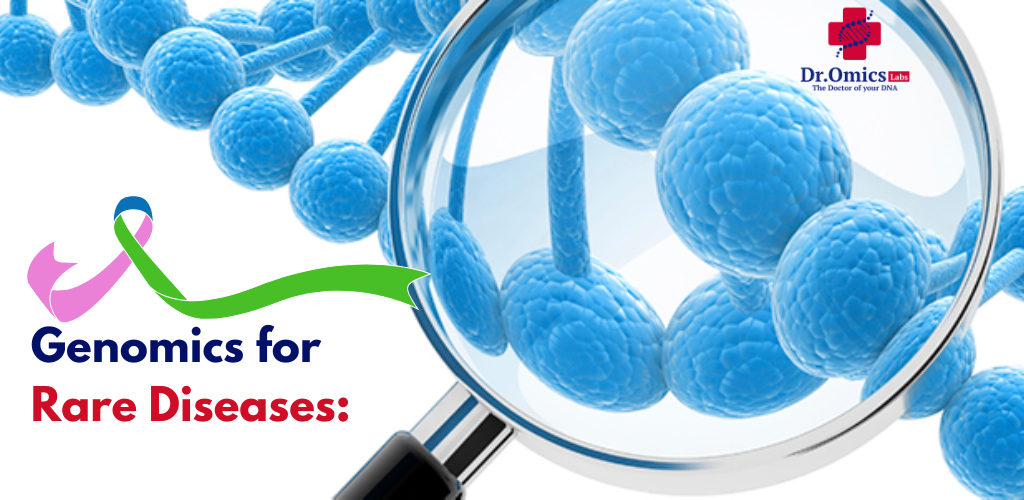Genomics for Rare Diseases: How Advances Are Changing Lives
The field of rare disease genomics is undergoing a transformative evolution, driven by advances in genetic testing and innovative bioinformatics strategies. These developments are not only enhancing diagnostic accuracy but also paving the way for personalized treatment options. As genomic breakthroughs continue to emerge, they hold the potential to significantly improve the lives of individuals affected by rare conditions. This blog explores the impact of these advancements on rare disease management and the future of precision medicine.
The Landscape of Rare Diseases
- Rare diseases (RDs) encompass a diverse array of conditions, affecting approximately 3.5% to 5.9% of the population. The number of rare diseases is estimated to be over 6000 globally, and that the exact number is debated, and constantly changing [1]. Majority of these diseases have a genetic origin, with many manifesting during childhood. The rarity and heterogeneity of RDs present unique challenges, including:
- Limited Diagnosis Options: Traditional diagnostic methods often fail to identify the underlying genetic causes of RDs.
- Lack of Established Treatments: Many RDs lack effective therapies, necessitating innovative approaches to treatment.
- Limited Rare Disease Data: The complexity of RDs leads to gaps in understanding, hindering research and clinical practice due to lack of large scale studies, lack of animal models and lack of understanding of the molecular mechanisms of the disease.
- Examples of Rare Diseases
- Huntington’s Disease
-
-
- A neurodegenerative disorder linked to mutations in the HTT gene, resulting in progressive motor dysfunction and cognitive decline.
- It has a prevalence of about 10.6–13.7 cases per 100,000 individuals, with symptoms typically appearing in mid-adulthood. [2]
-
- Duchenne Muscular Dystrophy
-
-
- Caused by mutations in the dystrophin gene, leading to muscle degeneration and weakness.
- Primarily affects males, with an incidence of approximately 1 in 3,500–5,000 live male births. [3]
-
- Spinal Muscular Atrophy
-
- Characterized by the loss of motor neurons due to mutations in the SMN1 gene, leading to muscle wasting and weakness. Genetic testing of SMN1 has enabled precise epidemiological studies, revealing that SMA occurs in 1 of 10,000 to 20,000 live births and that more than 95% of affected patients are homozygous for SMN1 deletion.
- It is one of the leading genetic causes of infant mortality, with varying severity based on the genetic subtype. [4]
Advances in Genetic Testing
Genetic testing for rare diseases has evolved significantly, with Next-Generation Sequencing (NGS) emerging as the gold standard. This allows scientists to rapidly read millions of DNA sequences at once, enabling the detection of subtle genetic variations, which allows for comprehensive analysis of genetic variants, facilitating timely diagnosis. Key advancements include:
- Customized Algorithms: Personalized NGS strategies integrate clinical data with genomic information, improving diagnostic rates. In a pilot program, causative variants were identified in 32.9% of index patients. [5]
- Long-Read Sequencing: This method allows for the reading of larger fragments of DNA, which enhances the detection of hidden genetic structural variants and repeat expansions, contributing to the diagnosis of previously undiagnosed families. [6]
Genomic Advances: Improving Diagnosis and Treatment of Rare Diseases
Recent genomic breakthroughs are reshaping the landscape of rare disease research and treatment. These include:
- Integration of AI and Machine Learning: AI algorithms can analyze vast genomic datasets to identify patterns and predict disease risks, while Machine learning models can help to predict protein folding, and therefore help to understand how genetic variants affect protein function which helps in the diagnosis of rare diseases. Therefore, advanced data analytics facilitate the identification of genetic variants and improve the understanding of disease mechanisms. [7]
- Collaborative Initiatives: Large consortiums, such as the Solve-RD project, focus on increasing diagnostic success through shared resources and expertise. [6]
- Personalized Medicine Approaches: Genomic medicine aims to tailor treatments based on individual genetic profiles, enhancing therapeutic efficacy and safety. [7]
The Role of Equity in Genomic Medicine
Despite the promise of genomic medicine, disparities in access and outcomes persist. Addressing these inequities is crucial for ensuring that advancements benefit all populations. Key considerations include:
- Ecosocial Theory: This framework can guide initiatives that incorporate illness narratives, promoting health equity in genomic research. [8]
- Diverse Representation: Ensuring diverse populations are included in genomic studies is essential for understanding the full spectrum of genetic variation and its implications for health outcomes. [8]
Conclusion
The advances in rare disease genomics are revolutionizing the diagnosis and treatment of these conditions, offering hope to millions affected by RDs. As the field continues to evolve, the integration of innovative technologies and a focus on equity will be vital in realizing the full potential of genomic medicine. However, challenges remain, and ongoing efforts are necessary to ensure that all individuals benefit from these groundbreaking developments.
In contrast, while the advancements in genomics present significant opportunities, they also raise ethical concerns regarding data privacy and the potential for misuse of genetic information. Balancing innovation with ethical considerations will be essential as the field progresses.
References
- Chung, C. C. Y., Hong Kong Genome Project, Chu, A. T. W., & Chung, B. H. Y. (2022). Rare disease emerging as a global public health priority. Frontiers in public health, 10, 1028545. https://doi.org/10.3389/fpubh.2022.1028545
- McColgan, P., & Tabrizi, S. J. (2018). Huntington’s disease: a clinical review. European journal of neurology, 25(1), 24–34. https://doi.org/10.1111/ene.13413
- Mah J. K. (2016). Current and emerging treatment strategies for Duchenne muscular dystrophy. Neuropsychiatric disease and treatment, 12, 1795–1807. https://doi.org/10.2147/NDT.S93873
- Nishio, H., Niba, E. T. E., Saito, T., Okamoto, K., Takeshima, Y., & Awano, H. (2023). Spinal Muscular Atrophy: The Past, Present, and Future of Diagnosis and Treatment. International journal of molecular sciences, 24(15), 11939. https://doi.org/10.3390/ijms241511939
- Méndez‐Vidal, C., Bravo‐Gil, N., Pérez-Florido, J., Marcos-Luque, I., Fernandez, R., Fernández-Rueda, J. L., González‐del Pozo, M., Martín-Sánchez, M., Fernández-Suárez, E., Mena, M., Carmona, R., Dopazo, J., Borrego, S., & Antiñolo, G. (2025). A genomic strategy for precision medicine in rare diseases: integrating customized algorithms into clinical practice. Journal of Translational Medicine, 23(1). https://doi.org/10.1186/s12967-025-06069-2
- te Paske, I. (2024). From Data to Diagnostics: Innovative Bioinformatics Strategies for Diagnosing Rare Genetic Diseases. https://doi.org/10.54195/9789465150031
- Hong, J., Lee, D., Hwang, A., Kim, T., Ryu, H., & Choi, J. (2024). Rare disease genomics and precision medicine. Genomics & Informatics, 22(1). https://doi.org/10.1186/s44342-024-00032-1
- Wojcik, M. H., Smith, H. S., & Fraiman, Y. S. (2024). Where the Genetic Code Meets the Zip Code: Advancing Equity in Rare Disease Genomics. Hastings Center Report, 54(S2). https://doi.org/10.1002/hast.4929




